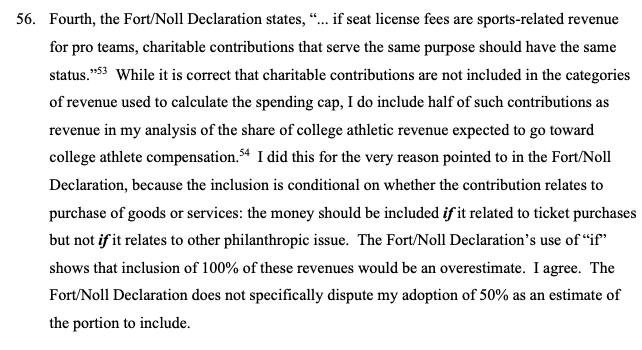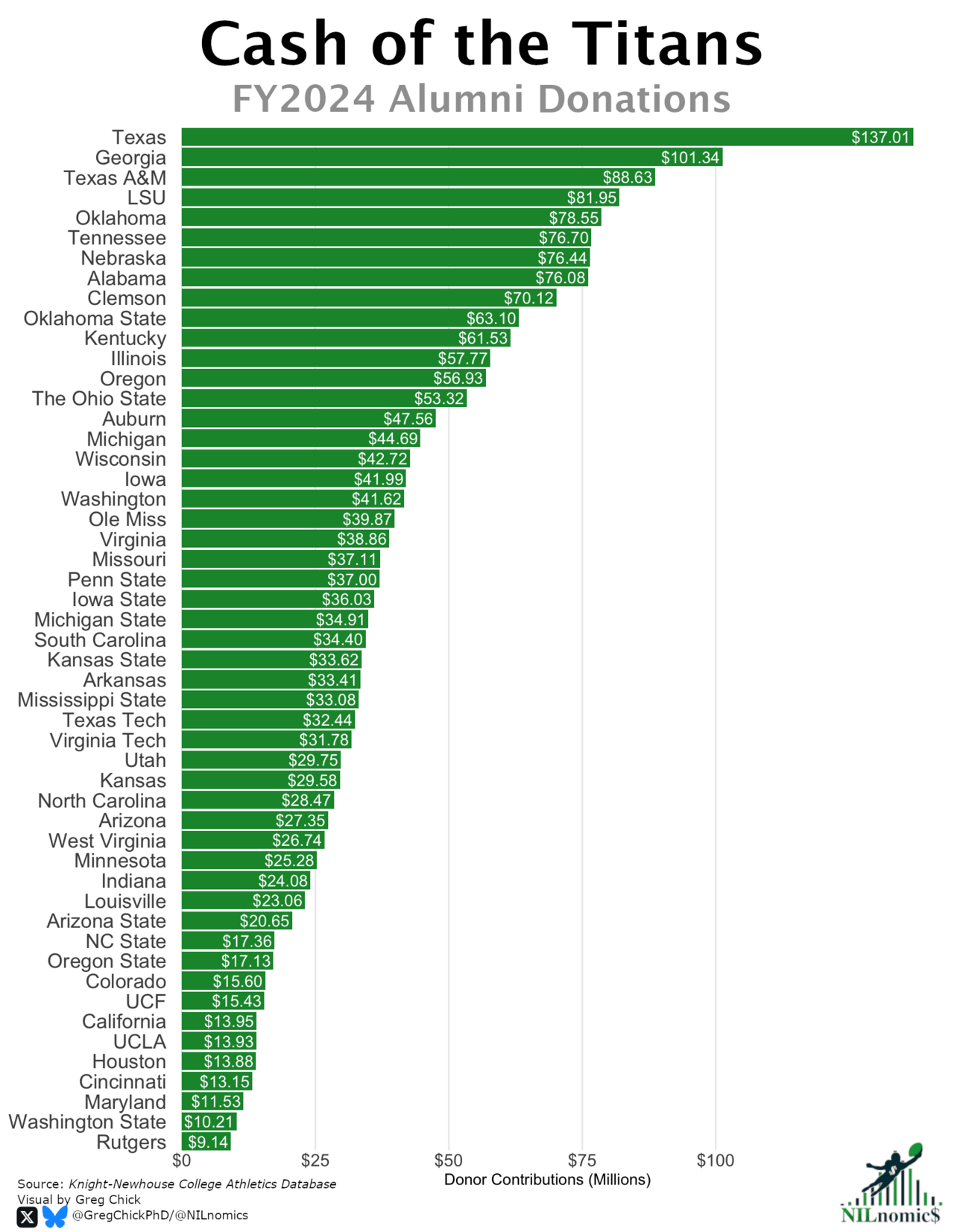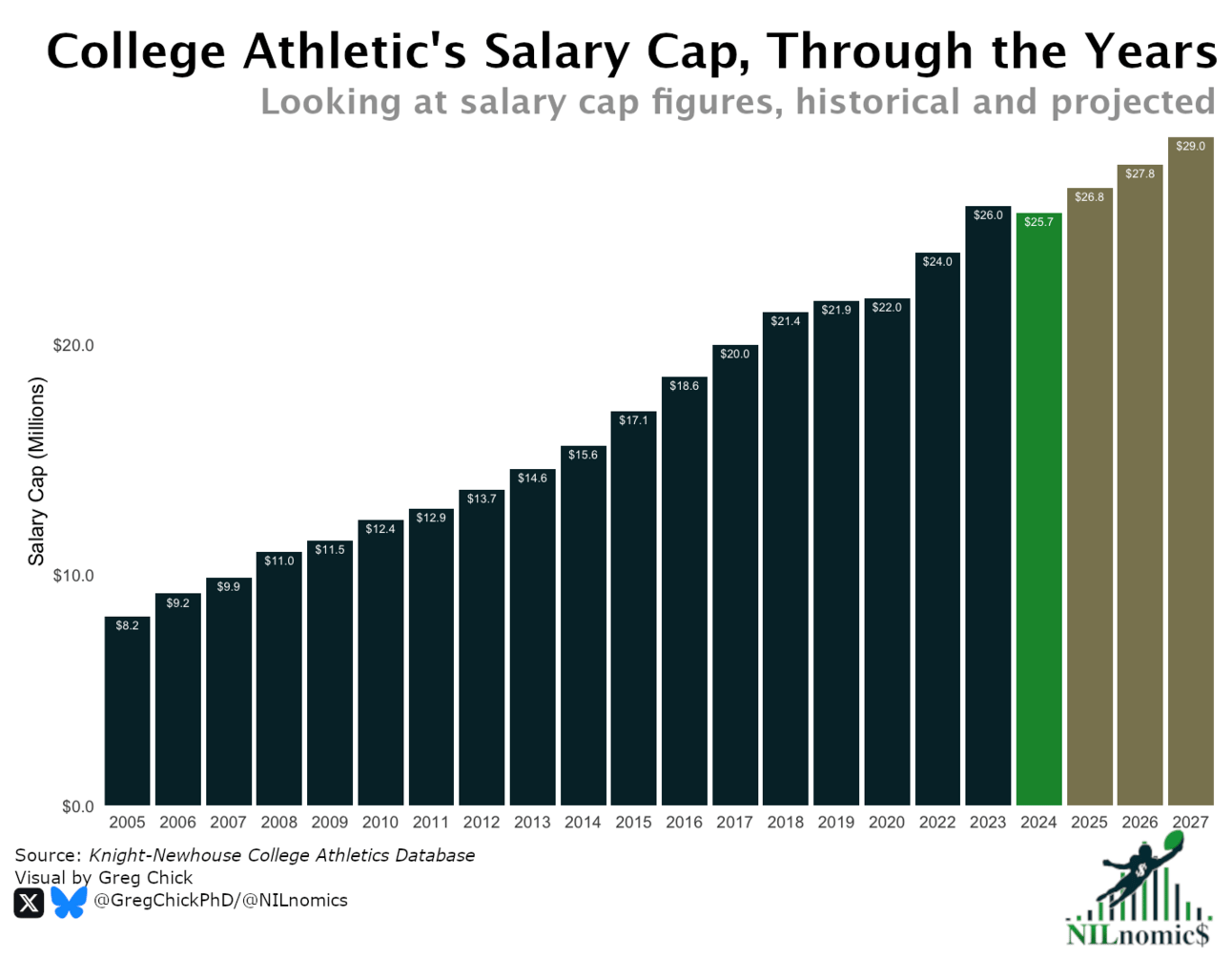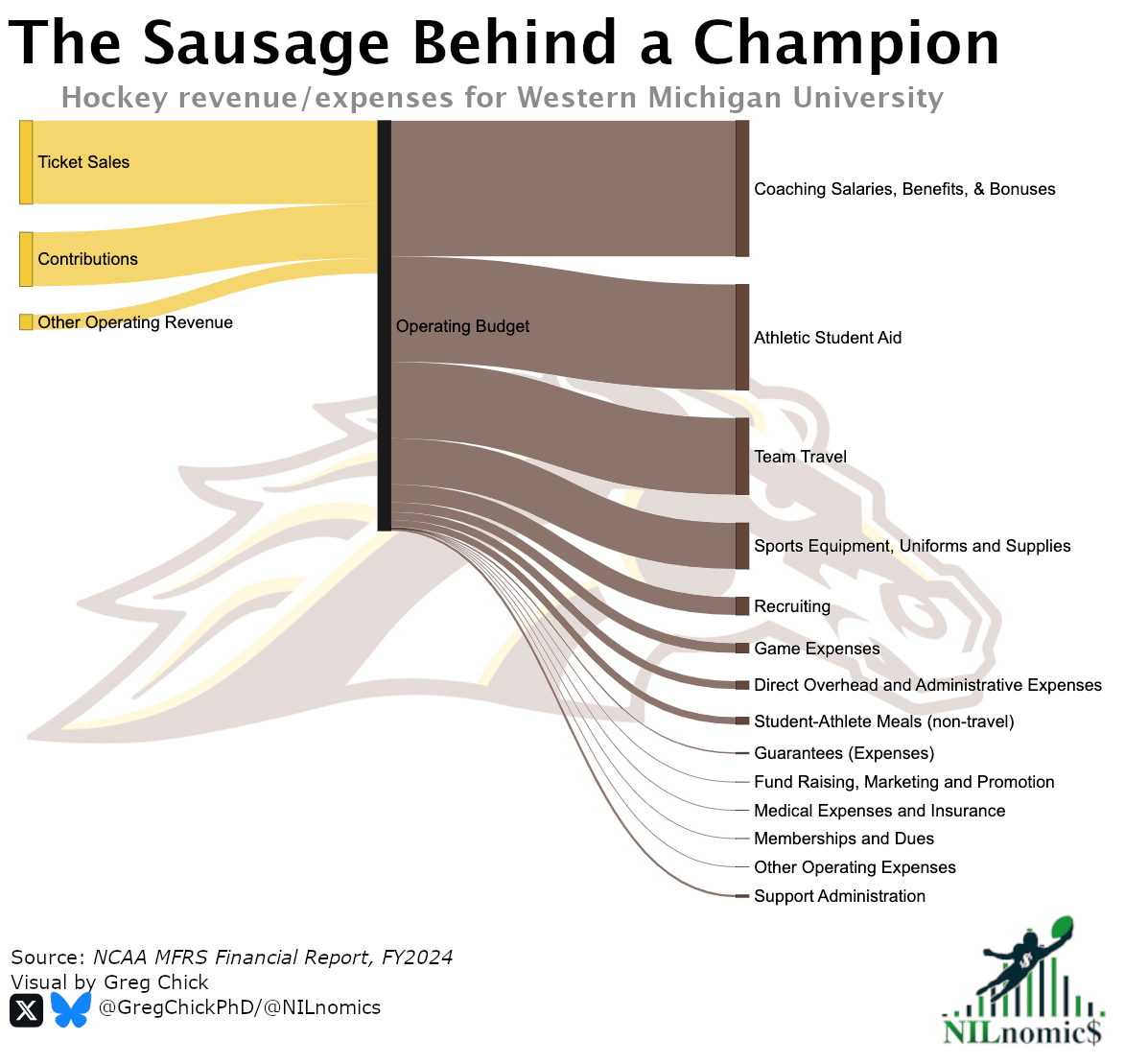- NILnomics
- Posts
- The war over athletic donations
The war over athletic donations
The first issue post-House is targeting exactly what athletic donations are

Hello there and thank you for taking the time to read NILnomics. There is some great insight here into the post-House world I think you’re going to love.
Today I’m looking at:
Athletic Donor Contributions 💵 - What are they, why they matter, and why they’re in the news
College hockey 🏒 - looking at the finances of this year’s championship, Western Michigan University
Pour a drink. Get comfortable. Let’s get into it.
If you’re not subscribed already, please click subscribe below to get NILnomics in your mailbox each and every week.
👀 All eyes on athletic donations
This bit from Sports Business Journal seems to have slipped by unnoticed by most (likely due to so many other happenings around the change of the fiscal year/House settlement implementation). As they reported, the plaintiffs lawyers in the House settlement are already utilizing their agreed upon right to audit the Power Five’s financial accounting. Specifically, they are looking to understand exactly what the Contributions category for each Power Five school entails. What's a contribution?
Line #8 of each school’s MFRS reports defines a contribution as:
“Amounts received from individuals, corporations, associations, foundations, clubs or other organizations designated for the operations of the athletics program.
Funds contributed by outside contributors for the payment of debt service, lease payments or rental fee expenses for athletic facilities in the reporting year.
Amounts received above face value for tickets.
Contributions shall include cash and marketable securities.”
The basic idea is if someone is donating to an athletic department purely as a philanthropic endeavor, that should not be included in the pool revenue that determines the salary cap. There are, however, many circumstances where donations to the athletic department are made for, as House expert witness and sports economist Daniel Rascher points out, for goods and services.
Many schools have fans donate to the athletics department to get priority ticket access, preferential treatment at athletics events, put on the season ticket waitlist. If you want an interesting example, check out this 2024 article about how fans have to donate $31k at South Carolina to get into leasing a luxury suite at the stadium. Is that a genuine philanthropic donation or is it for goods and services?
When calculating pool revenue, Rascher assumed 50% of contributions were for goods and services. I believe the plaintiffs lawyers want to dig in to the data a bit more and see just how accurate that 50% assumption is. And I’m here to do the same.
I pulled the data from the Knights Newhouse database, which has the MFRS data for all public institutions (note all private schools are missing). First, just for a sense of scale, let’s look at what schools are pulling in for donations:

Quick Takeaways:
There’s something to be said about the fact that there’s two institutions with donations over $100 million. Unsurprisingly, Texas and Georgia own these distinctions.
The median is $34 million - less than 25% of Texas’ staggering $137 million haul in FY2024.
Rutgers catches alot of flak in many ways since joining the B1G, but its remarkable how they’re the only institution that didn’t clear $10 million in donations.
Analyst’s Desk
As I mentioned, this data comes straight from the Knight Newhouse database. I downloaded all data from 2005 - 2024. The data above is for the latest year (FY2024).
The impact of a 50% assumption 💰️
As stated before, the sports economist Daniel Rascher assumed 50% of contributions were for goods and services. But what if the reality is different? Let’s look at what happens to the cap (just for fun) if the actual amount of athletic philanthropy that was for goods and services was 25% (for the player’s sake, I hope not), 75% (possible?), or 100% (unlikely, I hope). What happens to the salary cap in these situations?

Quick Takeaways:
Unsurprisingly, how much you assume donations are for goods and services matters alot! There’s a whole $2 million swing up and down if you increase/decrease the athletic donations by 25%.
Analyst’s Desk
The general pool revenue formula is to incorporate the following categories:
-Corporate Sponsorship, Advertising, Licensing
-Competition Guarantees
-Conference/NCAA Distributions, Media Rights, and Post-Season Football
-Ticket Sales
-Donor Contributions
From there, I just totaled up the pool revenue and averaged it across the Power Five institutions and took 22% to determine the salary cap.
I did this for different permutations of the Contributions field - at 25%, 50%, 75%, and 100% of Contributions.
Looking at the Salary Cap: ⬅️ Backwards and Forwards ➡️
While I have all this pool revenue/salary cap at my fingertips, I thought I’d visualize exactly what the salary cap would have looked like in past years (maintaining the 50% contribution assumption). The graph below shows where the salary cap would have been as far back as 2005 and projecting forward 3 years using the 4% increase that the House settlement dictates.

Quick Takeaways:
It’s striking to see just how much revenue has increased in college sports through the years using a constant estimation method.
The future calculations show the cap is only expected to go up $1 million each year. That seems on par with prior annual changes.
Analyst’s Desk
One important piece to note is I didn’t use inflation adjusted data as I thought it more realistic to use the financial data that existed at the time of each salary cap. The future years (2025-2027) are based on the same 4% increase that is stated in the House settlement. I excluded 2021 due to COVID.
🏒 College Hockey Corner 🏒
This week’s college hockey analysis concerns the new Division I Men’s Ice Hockey champion, Western Michigan University.

Quick Takeaways:
There is a clear disparity between itemized ice hockey income/revenue, with total revenue at $917k and total expenses at $2.4 million.
Like most non-revenue sports, ice hockey is supported by general athletic department resources. In financial reporting language, that could be due to revenue not tied to a specific team/gender.
WMU’s head coach has a reported salary of $408k with 3 staff members making an additional $406k. This can be compared to a total financial aid budget for the athletes of $633k.
It should be noted that the overall athletic department lists a $724k deficit
Analyst’s Desk
This visual was created by pulling the ice hockey specific data points from the latest (FY2024) NCAA MFRS Financial Report (which you can find online here). From there, I separated out the revenue/expense categories to create the Sankey chart.
To be fair, this type of analysis is a bit misleading. Isolating a single sport within an athletics department obscures the fact that their are several shared revenue/expenses across the department. For example, the MFRS lists $21 million in direct institutional support (ie WMU subsidizing the entire athletic department) that isn’t attributed to any individual sport. Similarly, $2.8 million from the conference (MAC) and $4.8 million in contributions are other revenue sources for the entire department that aren’t attributed to an individual sport that the ice hockey program surely benefits from/contributes to.
📖 What I’m Reading/Listening To 🔉
I’m always on the lookout for anyone breaking down college sports and especially the business side of the industry. Here’s this week’s best listens:
The Journal - The Wall Street Journal has a sit down talk with NCAA President Charlie Baker. First post-House interview I’ve heard from him.
Sports Wise - an interview with the House settlement’s lead plaintiff…. Grant House! Interesting to hear his perspective on everything that’s happened.
Final Thoughts
Thanks for reading this week’s issue.
I think the salary cap is to be one of the most discussed topics in college athletics in this new, post-House world. I’m glad I got the chance to dig into it a bit more. It should be interesting to see what the plaintiff’s lawyers find.
Until next time,
Greg Chick, PhD
Data Analyst
📩 Know someone who cares about the future of college sports? Forward this email or share the subscription link.
💬 Got feedback or a topic you want me to cover? Reply to this email - I read everything!
🖥️ The NILnomics website is your home for all NILnomics content.
⌨️ R code is available at my GitHub here.
📁 FOIA documents are available from my Google Drive here.

NILnomics is an independent data-driven newsletter uncovering the real numbers behind college sports finances with sharp insights, clear visuals, and exclusive datasets. Please send any thoughts, questions, or feedback to me at [email protected] and please follow me on X @NILnomics. Don’t forget all our data is available on Kaggle, code on GitHub, and FOIA documents on GoogleDrive. See you next week!
Reply